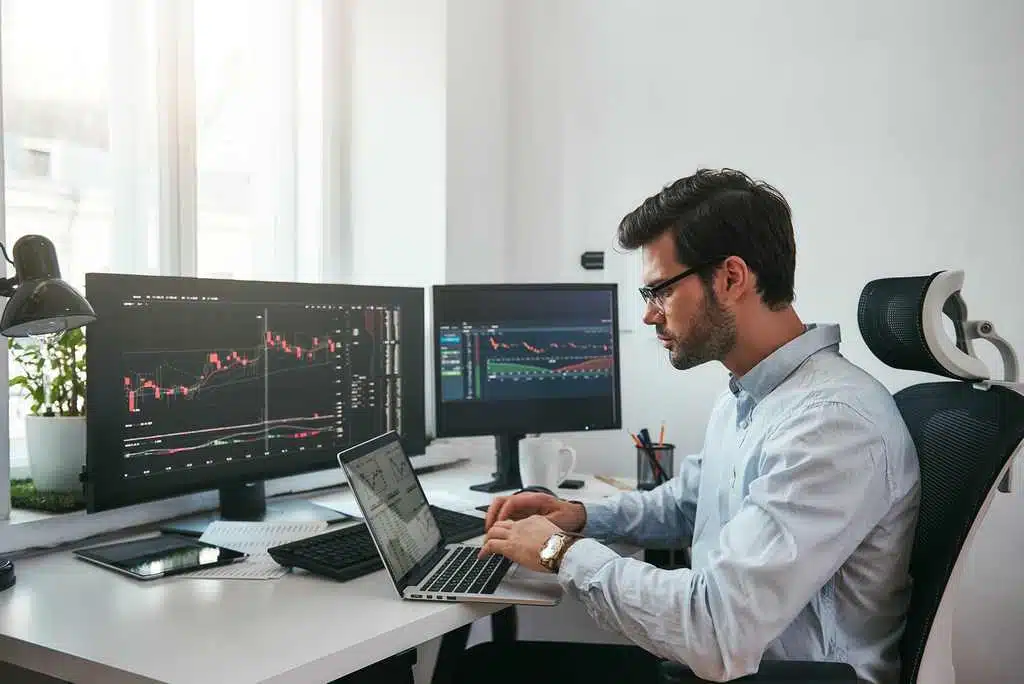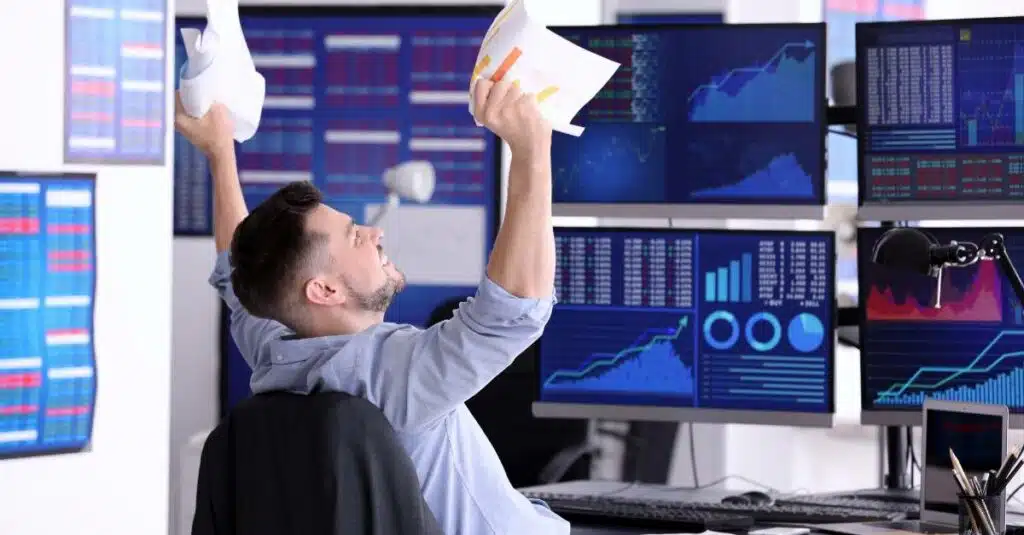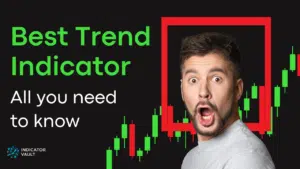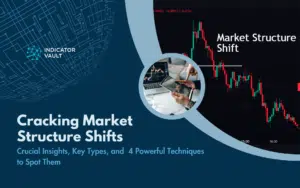Advertisements for traders and brokers typically showcase a glamorous and lavish lifestyle, which is often associated with the wealth that comes with trading. Successful traders tend to flaunt their achievements, but there is a less glamorous reality behind the wealth that professional traders amass.
Like any other successful endeavor, becoming a professional trader takes time and effort, even for seasoned traders. This means that professional traders face a challenging daily routine or time frame they choose to focus on.
So, what exactly does a typical day in the life of a professional trader look like?
Table of Contents
1. Maximizing Trading Hours: Tips from Pro Traders
Different traders have varying schedules depending on the assets they trade. Some may trade part-time, full-time, or during specific predetermined times based on the strategies and time frames they use.
For instance, in the Forex market, trading sessions run around the clock, 24 hours a day. In the US, the trading day spans from Sunday evening to Friday afternoon. Similarly, in Asia and Europe, the trading sessions run at different times with some overlapping.
A Forex trader who doesn’t choose a specific time frame based on their strategies or preferred currencies will find themselves stuck to their screens for extended periods, longer than a typical full-time employee.
2. A Day in the Life of a Pro Trader: How They Trade
A typical trading day or session can be broken down into three — before, during and after.

2.1. Before trading starts
Prior to trading, professional traders consider the most critical parts of their day to be the pre-trading routine. To begin, they focus on their well-being, particularly their mental state, before delving into research and analysis.
It’s essential that they are mentally prepared to tackle the market and not weighed down by previous losses. To set a positive tone for their trading day, some traders begin with exercise and a nutritious meal.
In addition to monitoring the market, trader may use a trading checklist that outlines the variables to consider to ensure they open and close positions at optimal prices.
How do the pros check the markets and analyze the charts?
Upon starting their trading day, professional traders first review any open trades from the previous day and make necessary adjustments such as repositioning the stop-loss level.
They then update their trading journal to track their progress and reflect on the previous night’s closed-out positions, noting whether they hit the target or stop-loss level.
If their plan is to trail stops in an open position, they analyze the movement and determine the most logical place to adjust their stop.
As for chart analysis, experienced traders are well-versed in one or two trading strategies and concentrate on a small number of markets to focus on where profitability is highest.
2.2. During market sessions
Once the market opens, professional traders adjust their activity level based on their current strategies.
Position traders may remain inactive during a typical session, as they hold positions in the long term. They watch for price zones or significant changes in their assets.
In contrast, day traders monitor the markets actively and react quickly to price fluctuations.
Professional traders take breaks from the markets during sessions to avoid over-analyzing and over-trading. They are well-versed in their trading edge and don’t require an excessive amount of time to analyze the market.
Sounds complicated, right?
Don’t worry, we have everything you need in the Indicator Vault. With the mission to assist you in bettering your chart analysis and trading abilities, we have developed many indicators to help you trade more pleasant, stress-free (and hopefully profitable)
Get Instant Access To The ENTIRE Collection Of All Of Our Top-Rated Custom Indicators for TradingView.
2.3. After trading day
After a trading session ends, professional traders take time to unwind and reflect on the day’s market activity, often stepping away from their trading environment to enjoy the rest of their day.
It’s worth noting that this routine isn’t universal and that different traders follow different schedules. However, it’s essential to establish a routine that enables you to remain committed to your trading goals.
3. Successful Trading: Making Smart Lifestyle Choices

Treating trading like a business is a crucial role in the financial world, as it demonstrates a real commitment to the practice.
When adopting this approach, you must acknowledge that trading involves risks and rewards, as well as expenses, losses, and taxes. To achieve your full potential, thorough research and strategic planning are necessary.
Making better lifestyle choices is equally important. Professional traders understand the importance of building discipline and focus, as both factors contribute to a successful bottom line.
This requires prioritizing their health and eliminating bad habits while spending ample time with their families, as interpersonal problems may affect their trading decisions.
Key takeaways
Becoming a professional trader is no easy feat.
The financial markets are full of unpredictable challenges and to navigate them, traders must be physically, mentally, and emotionally equipped. They invest significant amounts of money, time, and effort before they can enjoy consistent wins and bigger returns.
So, if you believe that the flashy ads you see from brokers and traders are all for show, think again. By putting in the same level of commitment, you too can enjoy the benefits of the profession.
4. Ready to Level Up Your Trading? Here’s What You Need to Know
Join Indicator Vault and gain access to a diverse range of asset classes in one convenient location.
Practice trading by opening a demo account and take advantage of the option to copy trade, benefiting from the expertise of experienced traders with successful strategies. By doing so, you can earn money while still learning the ins and outs of the market.
Additionally, utilize the wealth of educational materials, webinars, and tools available to you to improve your understanding of trading, so that you can develop effective strategies more quickly. Once you’re comfortable with your approach, consider opening a live account and trading with actual money.
With practice, you’ll gain the discipline and mindset necessary to become a professional trader.
We’ve also put up the articles 4 Trading Tips That First-Time Traders Frequently Ignore and 4 Questions About Technical Indicators You Should Ask Before Trading to help you out a little. Check it out now!
Join Indicator Vault, utilize the variety of trading instruments offered, and establish yourself as a market power!
What do you think? What exactly does your typical trading day look like to become a professional trader?
Comment below to share your idea!
Find this article useful? Share this blog with your friends on social media!





